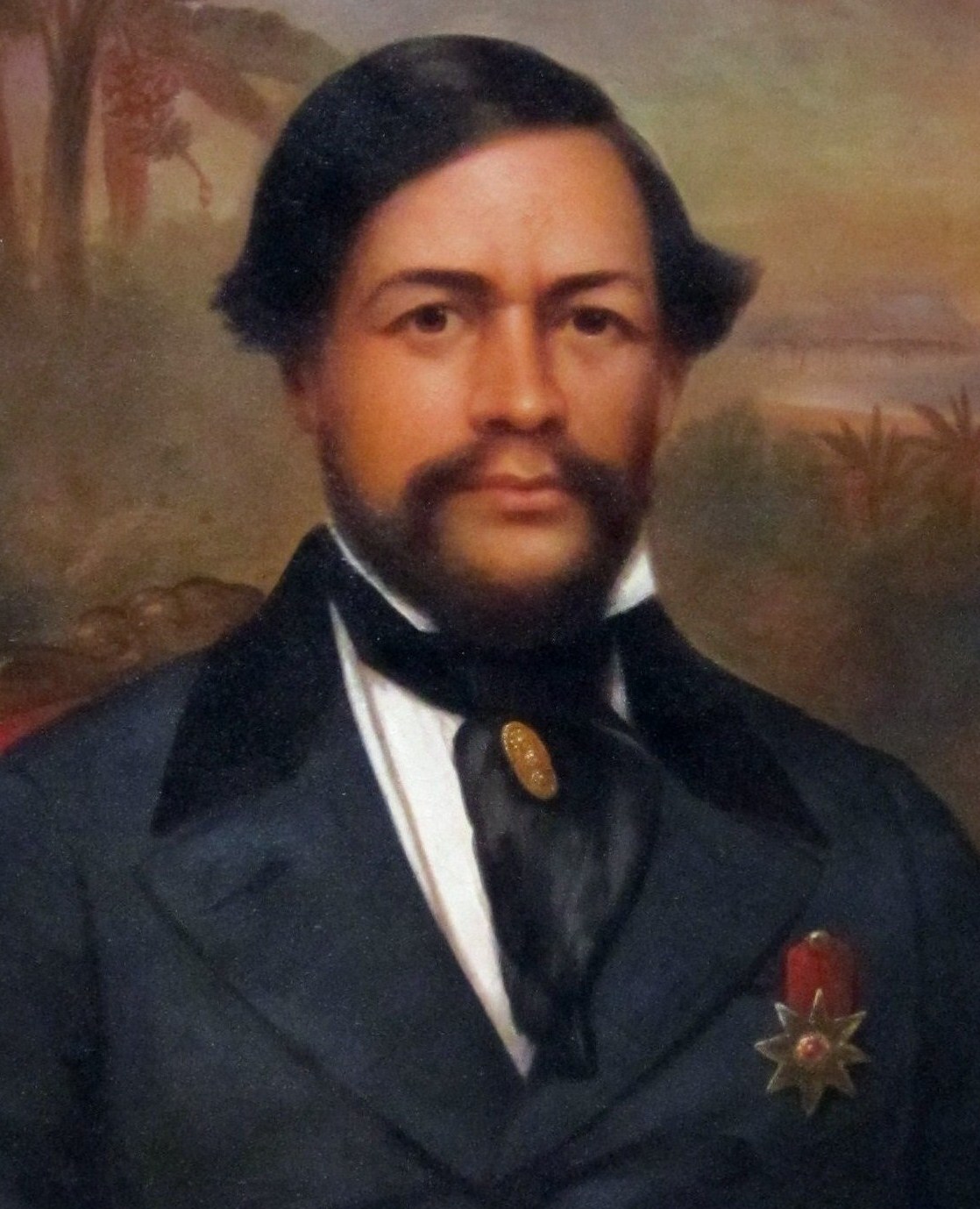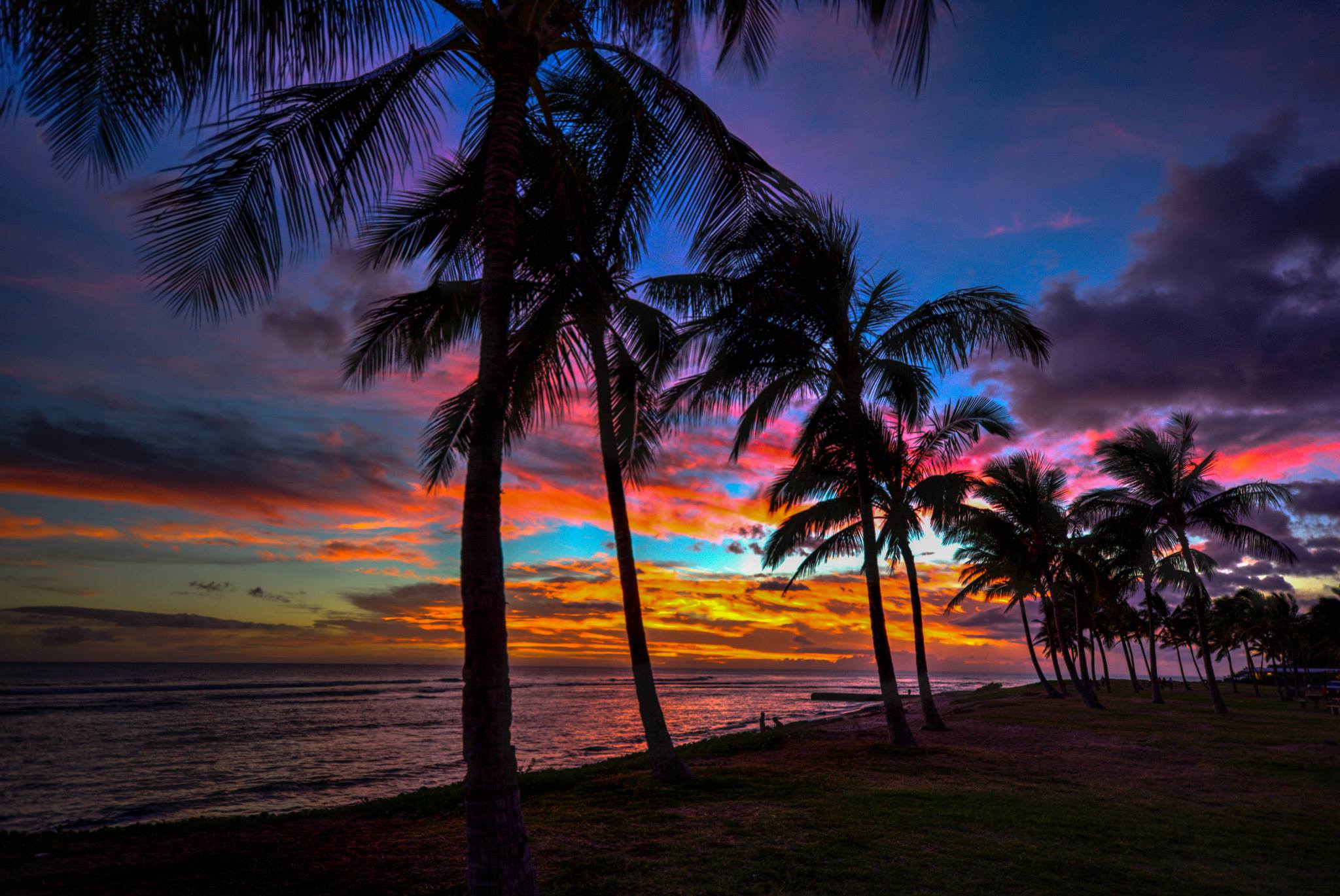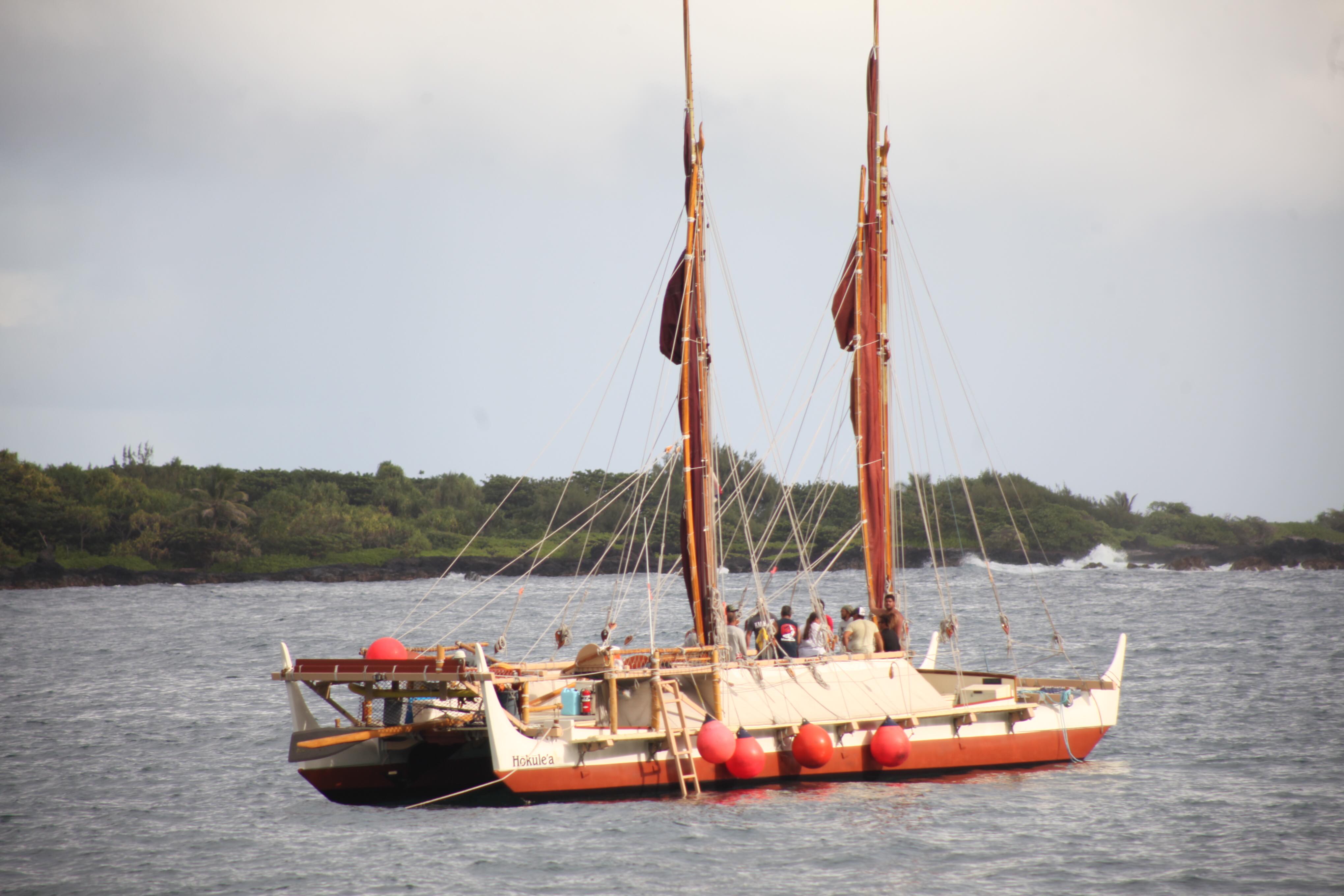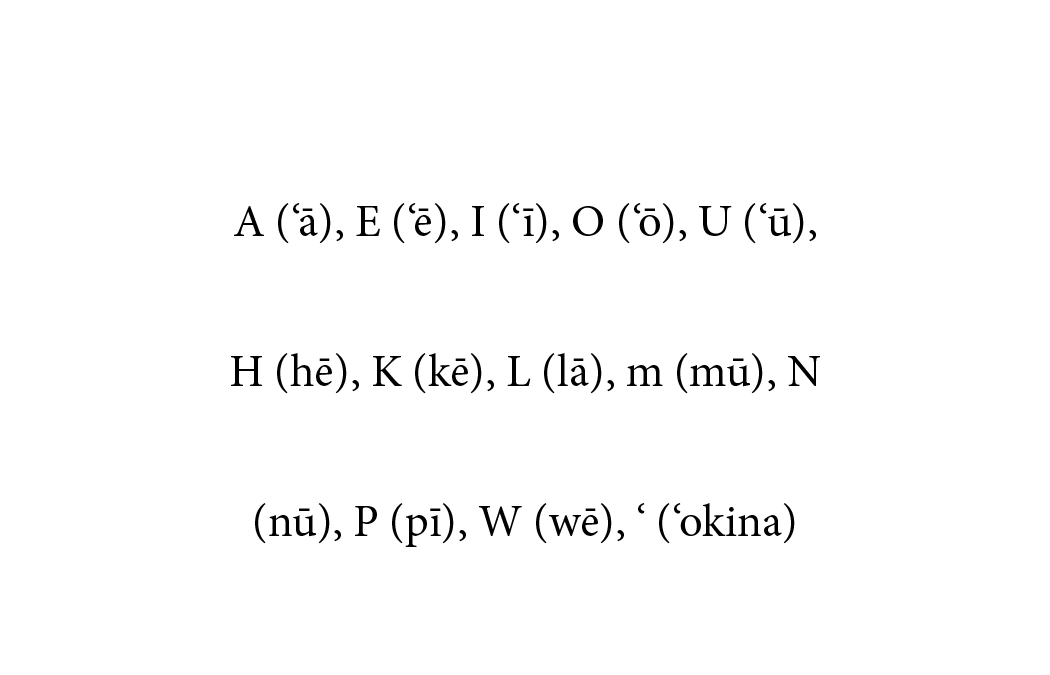He aupuni palapala koʻu.Mines is a kingdom of education. King Kamehameha III

What you’ll find in this section is a synopsis of the history and the origin of the Hawaiian language. We aim to provide support in our community with pronunciation of Hawaiian words and in understanding the structure and poetic nature of ʻŌlelo Hawaiʻi.
the hawaiian kingdom
The Hawaiian monarchy began with King Kamehameha the Great who united all the islands under one rule. King Kamehameha solidified his rule by 1810 following the 1795 battle of the Pali and willing subjugation of the island of Kauaʻi through diplomacy. In the years to follow, the Hawaiian kingdom became the focal point of trade and commerce in the Pacific. Shortly after the unification under sovereign rule, Hawaiʻi quickly became a force of education and literacy. With its sharp rise, the kingdom quickly became a target to wealthy and corrupt capitalists. Wealthy business owners would set in to motion the events that would eventually and illegally overthrow the monarchy, manipulated policy to their benefit and systematically oppressed the Hawaiian people. Today we continue to hold fast to eventually right the wrongs. Still, the people of Hawaiʻi are fighting tirelessly to restore our rightful position as a sovereign nation among the world. History has made it clear that the people of Hawai’i have suffered from the suppression of their native language and culture as well as being victim to the most visible case of denationalization in modern history still active to date. We still stand today at a very unique and precarious situation of still being occupied by the United States of America.
A lesson in history

King Kamehameha III
KING KAUIKEAOULI Reign: June 6, 1825 – December 15, 1854
The second son of King Kamehameha the Great to lead the great nation of Hawaiʻi, Kauikeouli, became the longest reigning monarch of Hawaiʻi who was greatly loved by his people. He and his Brother Liholiho with the influence of Kaʻahumanu started the initiative of literacy for their people. Hawaii accomplished many great literary feats under his reign. His famous saying was “He aupuni palapala koʻu”, “mine is a kingdom of education”. During his reign, the first Hawaiian newspaper was established. Within 15 years of adapting the Hawaiian language to the Roman alphabet, the Nation as a whole achieved a 95% literacy rate becoming one of the fastest nations to achieve this feat. in 1831, Lahainaluna School began a program for higher learning available for the teachers of Hawaii, becoming the first college west of Mississippi. The driving force behind this astonishing achievement can be linked to the use of the Hawaiian syllabary known as the Hakalama, the same powerful tool we use today. Kauikeouli faced many outside challenges to his power. Balancing the needs of his people and the wants of their foreign counterparts his rule was a great challenge. He alongside advisors created Hawaii’s first constitution and with that a judicial system. Kauikeaoli worked hard to secure the interest of his people, they eventually created a system of land ownership know as the great Māhele. Although intentions were good, landownership was a foreign concept to the Hawaiian people. This led to the displacement of many Hawaiian people who did not understand the protocol or the importance of petitioning for land that was being distributed at the time. You can compare this with being put in a marathon that you had no time to prepare for, and our competition had a 200 year head start.
Trouble in Paradise

The Hawaiian populations from the time of Captains Cooks arrival in 1778 until 1825 was reduced to one third of its original population. During the youngest monarch’s reign he would see that population reduced by half again due to epidemics of smallpox and measles. To put this plainly we went from a nation with more than 500,000 indigenous peoples to a population of less than 75,000 in less than 100 years. Hawaii has always been a target. From British captains to immoral businessmen, many had their sights on consolidating power and influence over Hawaii. So many underhandedly and systemically plotted events that undermined the Hawaiian people. Several well documented events like the Bayonet constitution took power from the monarchs and put the power in the hands of businessmen, conclusively done from the tip of a bayonet. These acts eventually laid the groundwork that led to the wrongful imprisonment of our Queen Liliʻuokalani and the illegal overthrow of our nation in 1893. The overthrow was also based on a lie told to the American government that American lives were in danger due to an uprising which led the American military to march on the Hawaiian palace in an act of war. Forced into subordination, the indigenous people of Hawaii quickly filled the ranks of poverty. The history of Hawaiʻi has many dark clouds such ethnic cleansing of the Hawaiian people and banning of the Hawaiian language from being spoken in schools. The repercussions of these vile acts still reverberate today. The Hawaiian people today fill the opposite end of the spectrum of literacy that once was unparalleled for its time. All these well documented events have more recently been brought to light by the signing of the Apology bill in 1993, a joint resolution adopted by the U.S congress that recognizes the illegal nature and wrong doing of what took place during the 1893 illegal occupation of Hawaiʻi which further reputes that the Kingdom of Hawaiʻi is still illegally occupied and under duress. And yet, little has be done by the American government to make things right
theHawaiian renaissance

In order to appreciate the Renaissance of the Hawaiian culture, you have to understands its dark past. In 1896 the Hawaiian language was outlawed from being spoken in schools, both public and private. This took place to satisfy the U.S policy against Native American languages in education (by the way we are not Native to America). Educators are told that the use of ʻŌlelo Hawaiʻi in the classrooms would result in termination. Children were both verbally and physically abused in schools for speaking their native tongue. This is like going to China or Pakistan and telling the people there that the only language they’ve ever spoken was no longer legal. They would be required to speak and write in a language they are not fluent in. The implications of these policies are far reaching and thrusted the Hawaiian people into socioeconomic hardship and greatly lowering the self esteem of the Hawaiian children. Some Hawaiian newspaper editorials would resist and plead with the public to keep the language in the home and in the church. During the early 19th century this created a massive dissonance between children in the public schools systems. They rejected both American education systems and their native tongues. They settled for the widely used pidgin english thus the overall state of academics among the Native peoples further declined.
In 1919, the territorial legislator passed a law requiring ʻŌlelo Hawaiʻi to be taught as a foreign language in all public schools, though these laws were loosely followed and created a poor and ineffective curriculum. In 1922, Hawaiian was taught as a foreign curriculum at the University of Hawaiʻi and this would mark the revival of the language after 25 years of supression by the U.S government.
In 1928, Mary Kawena Pukui begins translating Hawaiian language newspapers in hopes to catalog an accurate history for her people. This leads to Mary Kawena Pukui to write the first Hawaiian language dictionary in 1957. The real renaissance was considered to take place during the 1970’s when a full four years of Hawaiian would be offered at the University of Hawaii. The classes were filled 100 students strong. This led to eventual growth of the language and culture. The Aloha ʻĀina movement resumed as well with a great number of activist calling themselves the “Protect Kaho’olawe Ohana”, (PKO) whose sole mission was to stop the bombing and military training taking place on Kahoʻolawe. The Polynesian Voyaging Society began to revive the nearly lost art of traditional sailing. All in all, it was a beautiful and much needed start to reviving the ethnic identity of the Hawaiian people.
In 1984, after an uphill legal battle, Pūnana Leo O Kaua‘i started mirroring its cousin organization in New Zealand, Kōhanga Reo, an origination that immersed young children in their native tongues. The advent of Native schools saved the Hawaiian culture from the brink of extinction. Today we still have a long way to go towards normalizing the Hawaiian language being spoken once more.
Nā huapalapala ‘ōiwi
( The Hawaiian Alphabet )

Hawaii before the arrival of foreigners had no written language. in 1810 after the unification of the Hawaiian islands, missionaries adapted the Roman alphabet to the Purely oral language. This changed the entire landscape and sound of the language but also gave early Hawaiians the ability to read and write in their own tongue. Missionaries added vowels and indigenous consonants as well as borrowing consonants from other languages found in the pacific to create the Hawaiian language used today. A young Hawaiian by the name ʻŌpūkaha‘ia traveled abroad and lived in England, he studied Latin and Hebrew and eventually wrote his own grammar books. ʻŌpūkaha‘ia did a great service for his people, he informed the protestant missionaries of the Hawaiian language before their arrival to his home in the Pacific. Sadly in 1819 ʻŌpūkaha‘ia falls ill and dies before returning home; his books loss to history. His work is and influence is thought to have been a great contributor to the transition of the Hawaiian language to its modern form.
The ‘Okina is the Hawaiian name for the symbol that represents a Glottal stop. The ‘Okina creates a Pause in between a word.
For example Kou and Ko’u this break in the word alters its plurality and often its meaning.
Kou vs Ko'u listen below

The Hawaiian syllabary was created in the early 1800’s by combining the Roman alphabet with the Hawaiian language. Prior to this, the Hawaiian language was unwritten and had no alphabet. Hawaiian language thrived purely off memory and history, genealogy, and navigation was passed down all by chant. The Hakalama syllabary was the tool the early Hawaiians used to learn how to read. Still, it’s one of the primary modalities used to teach the language today. There are several variations of the syllabary and when mastered one can pronounce any word in the Hawaiian language.
Here at Kumu Cards, we are building all our curriculum based on the same resources our ancestors used to do so many amazing things. We not only plan to incorporate the syllabary but to also capture and infuse the mo’olelo (stories) & Pilina (connections) that make the Hawaiian culture so vibrant in all our products. We promise to keep on adding to this information. Our goal is to create the most comprehensive collection of information on the subject of ʻŌlelo Hawaiʻi and continue to share it free on our website. We hope to usher the language into the digital age not only on the interweb but also to create immersive applications and programs for the next generation to use.
FOR HELP WITH PRONUNCIATION

Click Here
A note from jen & benji
When looking back at the history of Hawaiʻi, you will find that it is a story that is bitter sweet. This beautiful and vibrant culture makes us very proud, yet wets our eyes when we delve into the many dark clouds of the past. Our mission is to enlighten the world with what occurred in Hawaiʻi so that we may not repeat the same mistakes. We are still the offspring of a great people. We wish to revitalize the love and mastery that we as a people once so greatly shone upon the world. We are fighting the tides of globalization and the false marketing of the Hawaiian image that is sold by Hollywood. We want to bring together our people and break through the barriers of division. We want to achieve great and noble things that can balance the darkness from the past of Hawaiʻi. We want to do what is right and leave our home a better place for our children to inherit.
This will take a community and a lifetime of hard work. Please help us make this a reality. We are in the works of creating a symposium for bettering Hawaiʻi. Please share and connect with us @kumucards on FB and IG or at benji@dev.kumucards.com @kumucards on FB and IG or at benji@dev.kumucards.com….Mahalo nui loa
